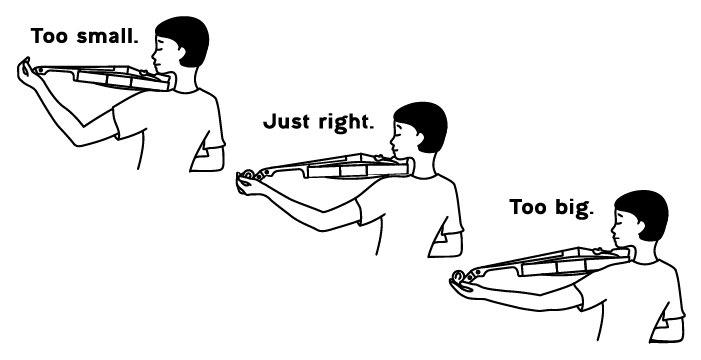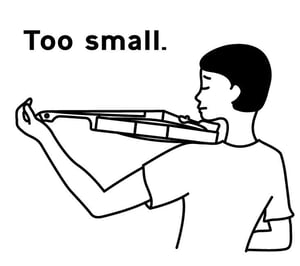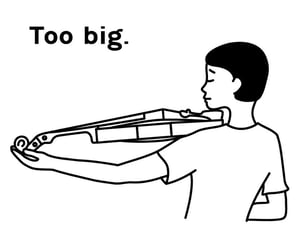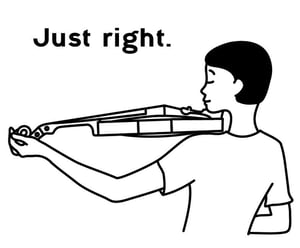How to tell if your violin is too small or too big

It is essential to play a violin that is sized correctly. Playing a violin that is too small or too big contributes to a range of issues that can compromise technique, sound, physical posture, and musical well-being. Here’s what to look for — and if you’re a parent of a younger violinist to know how to upsize the instrument as they grow up.
Size Variations in Violins
Violins come in a spectrum of sizes. From smallest to largest, the sizes are 1/32, 1/16, 1/10, 1/8, 1/4, 1/2, 3/4, and 4/4 (called a full-size violin).
The following are general guidelines for age and violin size. However, you should know that children’s sizes can be as varied as adults. As a result, personalized sizing will always override any generalizations.
- Kindergarten: 1/8
- Grades 1 - 2: 1/4
- Grades 3 - 4: 1/2
- Grades 5 - 6: 3/4
- Grade 7 to adult: Full-size
You may find it best to rent a violin in the beginning, rather than purchasing one. That way you only have to invest in buying a violin when your child has grown into the largest size (typically a full-sized violin by their teen years, although a smaller person (or a person with smaller hands/shorter pinkies) might play a 3/4 or 7/8 violin as an adult.
Signs Your Violin is the Wrong Size
So, before you buy that garage sale violin, or put your Aunt Sandy’s hand-me-down to work, make sure it’s the right size. The sales representatives at a local string instrument store or your music teacher are the best resources for determining whether a violin is the right size for you.
 The violin is too small if…
The violin is too small if…
- You wrap your fingers around the scroll and the fingers rest completely in the peg box
AND - There’s a sharp (90 degrees or less) angle, rather than graceful, bend of the elbow
 The violin is too big if…
The violin is too big if…
- The fingers can sit near but not inside the peg box
OR - The arm is completely straight when the fingers are resting in the peg box
 The violin fits just right if/when...
The violin fits just right if/when...
- You wrap your fingers around the scroll with your fingers resting in the peg box.
- When placing the violin on your shoulder with your chin holding the bottom of the violin (in the chin rest if it has one), the scroll rests on the wrist when the arm is fully stretched out.
- While holding the violin in playing position, the violin is wider than your left shoulder when you view from behind.
- The pinkie comfortably reaches the G string (without stretching) when the first finger is on the F# of the E string. You’ll know the hand is over-stretched by its hard, taut feeling and/or the strained expression on your face.
- You can hold the weight of the violin easily, and without strain, after dropping your arm away from the neck/playing position. If this is the only part that gives you a problem, you probably have the right-sized violin, but could benefit from a chin rest that fits you and is comfortable.
As we said in our article, How to Pick the Right Size Violin…, “...all of your well-meaning investments will mean nothing if your child starts off with the wrong size violin. Violin sizing is very important because it dictates how easily your child can navigate and manipulate the instrument.”
Replacing a violin that is too small or too big with a correctly-sized violin will enhance playing comfort and technique, and that is far more inspiring for a new and enthusiastic violinist.

